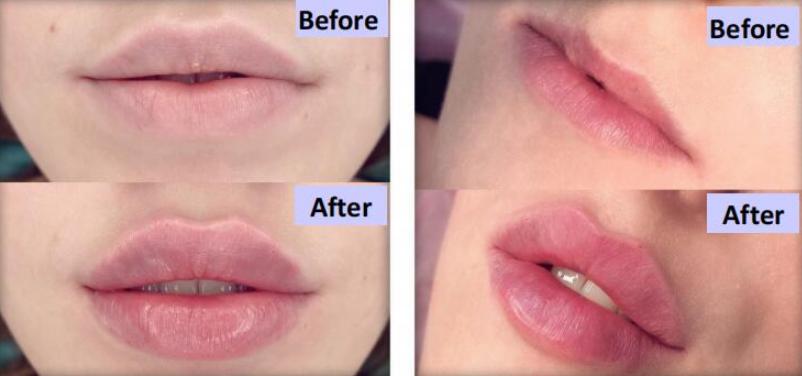Some individuals are naturally blessed with full, voluptuous, and perfectly shaped lips. For others, achieving the plump lips of their dreams without invasive procedures is made possible through one of the most popular methods – hyaluronic acid lip fillers.
Hyaluronic acid (HA) is a thick, clear sugar derivative naturally produced by the body to lubricate joints, eyes, and skin. Known for its ability to attract and retain up to 1,000 times its weight in water, HA serves as a potent hydrating and tissue-volumizing agent.
Hyaluronic acid lip fillers consist of synthetic hyaluronic acid and are administered through injections. Once injected, they provide support to lip tissue, contour the mouth, and address any asymmetries. This safe and minimally invasive procedure ranks among the most popular cosmetic treatments.
In the event a patient is dissatisfied with the results, hyaluronic acid lip fillers can be dissolved using hyaluronidase injections.

Patients can anticipate the following outcomes:
1. Fuller, more sensual lips
2. Enhanced lip definition
3. Reduction in wrinkles around the mouth
4. Correction of lip asymmetries
It may take up to two weeks for lip fillers to fully settle and exhibit their complete effects.
The impact of hyaluronic acid lip fillers varies for each individual, influenced by factors such as the patient's goals, the expertise of the injector, and the quantity of lip filler administered.
The application process varies depending on the type of lip filler. Cosmetic practitioners in the United States commonly use FDA-approved HA dermal filler injections and non-approved hyaluronic pens, which operate without needles.
To begin, medical providers apply a numbing cream to the patient's lips. Once it takes effect, the provider utilizes a fine needle or a thin cannula for the injection. Depending on the patient's objectives, the injection may target the body of the lips, the lip line, or just above the lip, often in multiple areas to ensure symmetry. Following the removal of the needle, the medical provider gently massages the area and observes the patient for a few minutes to confirm the desired results.
Many patients report minimal pain, experiencing only a sensation of pressure and a slight pinch. The entire process typically lasts about 30-45 minutes.
All HA lip fillers are temporary, with varying durations. The longevity of lip fillers is influenced by factors such as the brand of dermal filler, the quantity administered, your metabolism, and your daily lip movements.
Lip filler companies offer estimates on the longevity of their products based on clinical studies. Generally, the duration of FDA-approved fillers spans from a minimum of four to six months up to a maximum of 12 months, contingent on the specific product and the aforementioned factors.
Common side effects of lip fillers, such as bruising and swelling, can be addressed or minimized by following these aftercare tips:
1. Gently apply an ice pack to the lip area for short periods during the first 24-48 hours.
2. Consider taking arnica supplements to reduce bruising and swelling.
3. Avoid applying pressure to the treated area.
4. Refrain from dental work two weeks before and after the treatment.
5. Abstain from strenuous exercise for 24-48 hours.
6. Avoid consuming alcohol for 24-48 hours.
7. Refrain from using blood thinners for 48 hours.
After treatment, patients can anticipate mild swelling, bruising, and soreness.
While severe side effects are extremely rare, it is crucial to contact your doctor immediately if you experience the following:
1. Excessive peeling
2. Itching and redness around the lips
3. Severe swelling
4. Severe bruising
5. Rash on or around the lips
For individuals prone to cold sores, lip augmentation procedures may trigger a flare-up. In such cases, your doctor may prescribe medications to minimize the risk of cold sores after the treatment.
 Call us on:
Call us on:  Email Us:
Email Us:  No. 125(E), 10th Street, Hangzhou Qiantang Area, Zhejiang, China
No. 125(E), 10th Street, Hangzhou Qiantang Area, Zhejiang, China